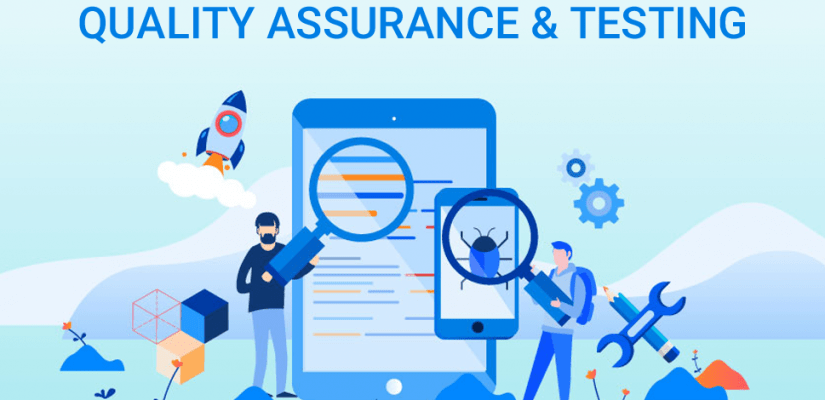As most companies are searching for solutions to decrease the products’ total time to market, the in-house teams and QA Testing companies face bigger challenges than before.
QA professionals need to develop a superb strategy for consistent testing that would keep pace with the alterations in the requirements and quick updates in the system of the product.
Regression testing in software engineering has a big role. Regression Testing in agile allows teams to concentrate on new functionality and take care of the stability at all levels of the product increment and the latest updates. Whatever the reason, there is a lack of knowledge regarding how you can apply regression testing in the agile environment while delivering actual value with each testing cycle.
In today’s blog, we’ll focus on how regression testing is applied in agile software development, the future challenges and tips that will be of great use for agile teams and help them reach the velocity and quality they are targeting.
Detailed Explanation Of Regression Testing
In most of the best software testing companies in India, whenever developers get their test reports, they apply the required fixes to the software. New bugs can pop out from anywhere while introducing innovative modifications in to the system. This is where regression testing appears in the scene. If performed properly, it helps in improving the total product quality. Well, there are 2 significant cases in which regression testing is used:
- After the prominent defects get fixed, the product demands quality assurance to assure that there are no side effects because of the implemented changes.
- As soon as the code gets updated because of a new feature, the requirements or business flows change. This is true in the case of functional regression testing, which tries to assure that there are no additional issues regarding the changes that have been applied.
Also, there is a word visual regression testing, which tries to ensure that the software appears as amazing as it works.
This is a summary of regression testing to help you understand its central idea.
You can also check the HikeQA blog on Understanding the Importance of Regression Testing for some in-depth knowledge on regression testing.
The Basic Methodology For Regression Testing In Agile:
According to the main concept followed by Agile Teams, testing has to grow with each sprint to assure that the changes in the end do not affect the last functionality.
Manual Regression Testing in agile takes a lot of time. The secret to enabling the best regression testing is automation. As it demands continuous repetition, automation is mostly preferred.
What’s the best way to develop a great strategy for automated regression testing?
For building a great strategy, it’s essential to know that the development and management of agile projects signify continuous alterations.
This is why, for the best benefit, all regression test sessions must get set with the changing environment. To confirm that the regression suite has great value, it’s a wise decision to create it with a special focus on high coverage, strong test scenarios and near-zero test handling.
Things to keep in mind while performing Regression Automation:
- The most significant benefit of automation testing over manual regression testing in agile is that it helps QA engineers focus on testing different environments and merging complicated cases. Anyways, there are always some things you must consider while planning a strategy for automating your regression test suite.
- Never try for a 100% regression test coverage, as it is difficult. This is why your priority must be to cover around 70-90% of manual tests.
- To make automated regression testing more effective, you must perform it as soon as you run your manual tests.
- It would be best if you thought about whether automation is the best solution for your project.
- There is a rule that automation best suits medium and big projects. Otherwise, you’ll not get a proper return on investment.
What are the major challenges of Regression Automation?
There are 2 significant challenges that your team must know about:
- False positives: Sometimes, because of obsolete test cases, timing issues and badly designed tests, the automation testing results might be irregular.
- Maintenance Issues- Agile Projects change fast, and that’s why automation regression test suites should be continuously taken care of so that you can reflect on every change in the project and prevent obsolescence of the test cases.
- Tips for Regression Testing in Agile:
After you have analyzed all the information and the tendencies of regression testing in software testing as mentioned above, we can provide you with a detailed list of tips to follow while adopting it in an agile environment.
You must prevent all obsolescence and ensure that you can only keep the test cases that are of the utmost value and priority. In most situations, regression suits must be hundred per cent automated.
This is why you must confirm that you do not include anything difficult to scale or automate.
There must be a proper procedure for accommodating the required changes for testing the code as your agile environment alters.
Check your scenarios within the suites for prioritizing the tasks.
Learn more about the Top 10 ways of automating regression testing from one of our most popular blogs.
Conclusion
You must ensure that the reports from the regression suite are completely visible to you and that you can measure and improve them. Contact HikeQA, one of India’s best software testing companies, for queries related to regression testing in agile.

















